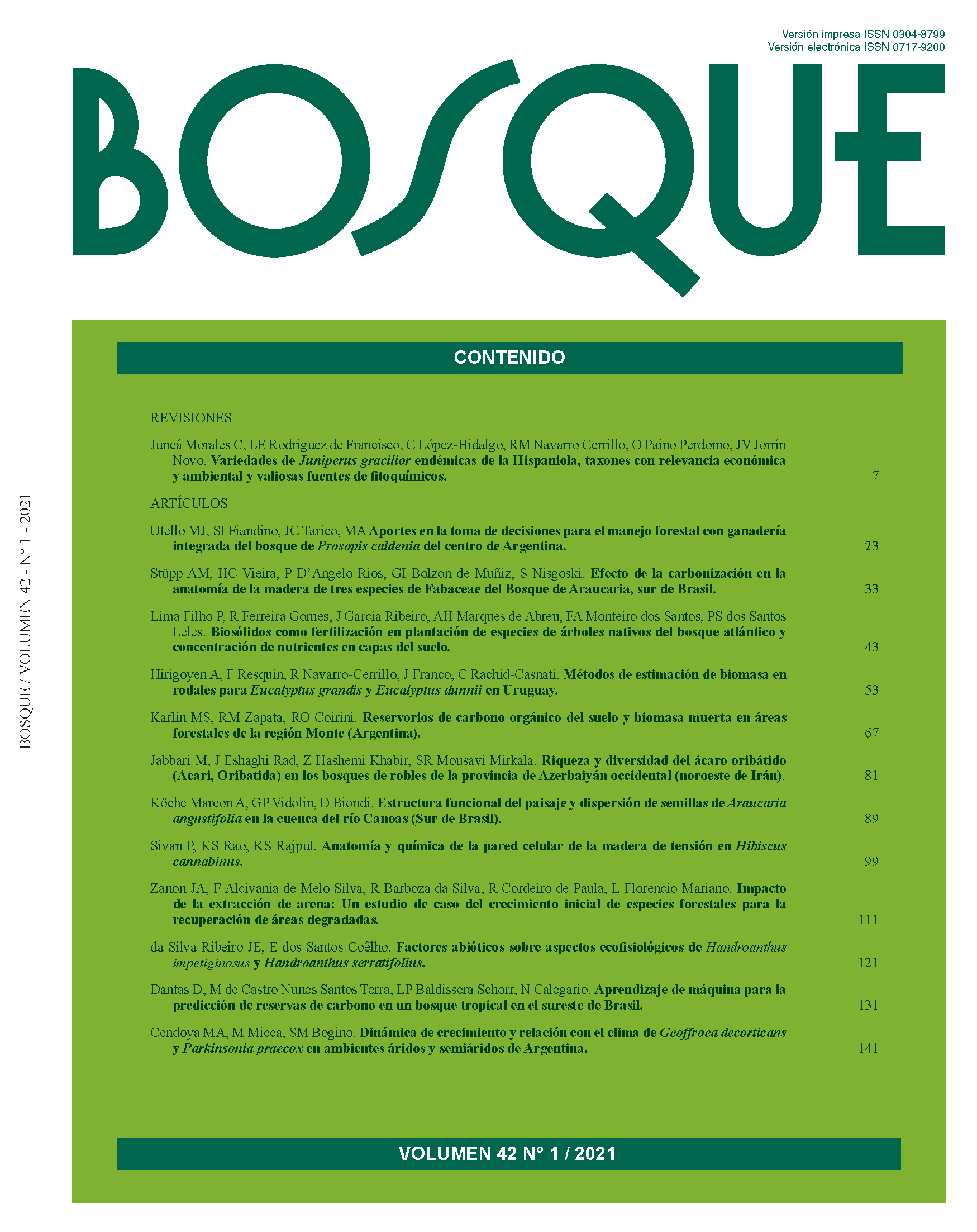Machine learning for carbon stock prediction in a tropical forest in Southeastern Brazil
Main Article Content
Abstract
The increasing awareness of global climate change has drawn attention to the role of forests as mitigators of this process as they act as carbon sinks to the atmosphere. Understanding the process of carbon storage in forests and its drivers, as well as presenting consistent models for their estimation, is a current demand. In this sense, the aim of this study was to evaluate the performance of machine learning techniques: support vector machines (SVM) and to propose a new nonlinear model extracted from the training of an artificial neural network (ANN) in the modeling of above ground carbon stock in a secondary semideciduous forest. SVM and ANN construction and training process considered independent variables selected by stepwise: minimum DBH (diameter of breast height - 1.3 m), maximum DBH, mean DBH, total height and number of trees, all by plot. SVM and the model extracted from ANN were applied to the data set intended for validation. Both techniques presented satisfactory performance in modeling carbon stock by plot, with homogeneous distribution and low dispersion of residues and predicted values close to those observed. Analysis criteria indicated superior performance of the model extracted from the artificial neural network, which presented a mean relative error of 6.94 %, while the support vector machine presented 13.52 %, combined with lower bias values and higher correlation between predictions and observations.

